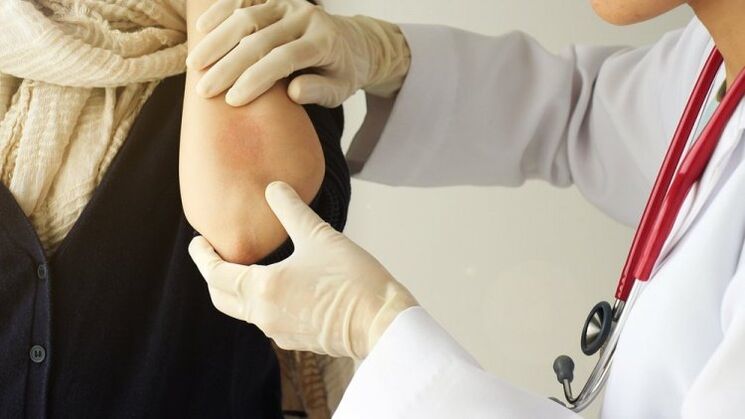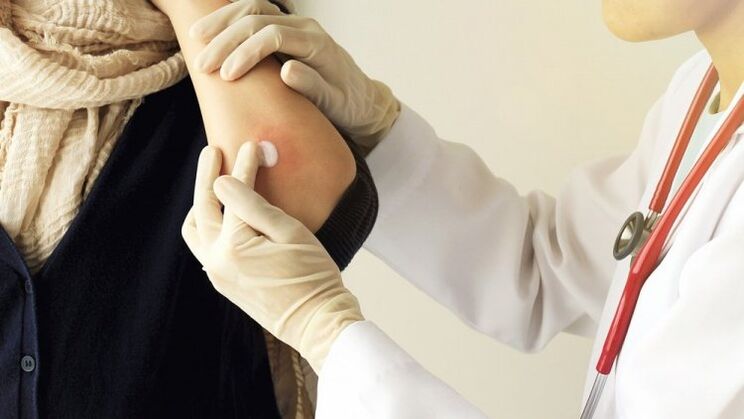Psoriasis is one of the most common chronic dermatological diseases. With such a pathological process, lesions of the skin, as well as skin appendages, are noted. The high urgency of this problem lies in the fact that it leads to a decrease in the patient's quality of life due to aesthetic disorders.
Usually, the first episode of psoriasis occurs between the ages of fifteen and forty-five. According to statistics, this disease is diagnosed in about three percent of the entire population. Moreover, the number of women and men suffering from this pathology is equal.
There are several theories regarding the mechanism of development of psoriasis. The main theory is the autoimmune theory, which states that this pathological process is formed by an incorrect immune response to any external factor. The excessive immune response leads to the development of an inflammatory response in the layers of the skin, which induces the division and multiplication of cellular structures. In addition, it is thought that genetic predisposition and exposure to various infectious agents may play a role in the development of this disease.
It has been found that psoriasis most commonly occurs in people who:
- Have any other dermatological conditions;
- Have thin and dry skin;
- Smoking and drinking alcohol;
- Systemic exposure to irritating chemicals;
- Often they injure the skin by mechanical influences;
- Observe excessive hygiene;
- Are under severe stress;
- Have a reduced level of immune defense or use drugs that suppress immunity.
Depending on the symptoms of psoriasis, it is common to classify this pathology into several forms:
- Plaque shape. This form is the classic version. It occurs in more than eighty percent of people. The clinical picture in this case is characterized by typical scaly patches, which tend to develop in the periphery;
- Teardrop-shaped. Progressive disease in this form is accompanied by the appearance of many small foci on the surface of the skin. Such lesions can be very different in color, raised above the surface of the skin, and scaly. As a rule, they do not increase in size, only their number increases;
- Saving form. It is one of the most unfavorable options. In this case, bubbles and vesicles filled with serous fluid form on the surface of the plaque. Very often, such elements undergo secondary infection with the subsequent appearance of pus in them;
- Psoriatic nail dystrophy. It is characterized by the involvement of the nail plates in the pathological process, they become striated and thickened. In most cases, the nails change color, peel, and break. In advanced cases, complete loss of the nail plate is possible;
- Psoriatic arthritis. The symptoms of psoriasis in this case are manifested by inflammation of the joints and connective tissues. In some cases, this form develops on its own, but is often accompanied by skin manifestations;
- Erythema psoriatic. This form is characterized by a very severe course and is often fatal. The development of inflammation in large areas of the body is noted, accompanied by intense peeling and flaking of the skin.
The main symptoms of psoriasis

We will talk in more detail about the classic form. What does psoriasis look like? First, on the surface of the skin appears single papules with pink or red color. These papules are covered with silvery white scales that are easy to scrape off. Over time, the number of papules increases, they begin to coalesce into patches.
The plaques that form in this disease present with congestion and edema. In some cases, mild skin irritation may occur. Pathological foci tend to grow peripherally rather rapidly and their surface is densely sloughed. Over time, the growth of the plates stops and their boundaries become clear. A specific sign of such a pathological process is a false rim, localized along the periphery of the fovea. During the quiescent phase, the appearance of a bluish-purple tinge on the surface of the patches is noted.
The symptoms of psoriasis in the regressive stage are characterized by the gradual disappearance of scabs, starting from the central part. After that, the skin acquires a normal color, after which the tissue infiltration disappears.
Diagnosis and treatment of this disease

First of all, psoriasis is established on the basis of its clinical picture. There is a specific triad of phenomena that indicate this pathological process: stearin spot, terminal membrane and blood mist. The steam spot phenomenon is when the wound is scraped off, the peeling phenomenon is more intense. If we continue scraping, a thin film is peeled off and the appearance of a wet and congested surface is noted - this is terminal film phenomenon. Blood mist indicates the presence of oozing with continued scratching.
Among the drugs for this disease, the following can be used:
- Glucocorticosteroids;
- Cytostatic drugs;
- Antihistamines;
- Keratolytic and anti-inflammatory ointment.
In addition, various physiotherapeutic treatments are widely used.
Prevention of exacerbations of psoriasis
To prevent exacerbations, avoid stressful situations, give up bad habits, and eat right. In addition, you should limit any irritating effects on your skin and avoid contact with substances to which you are allergic.























